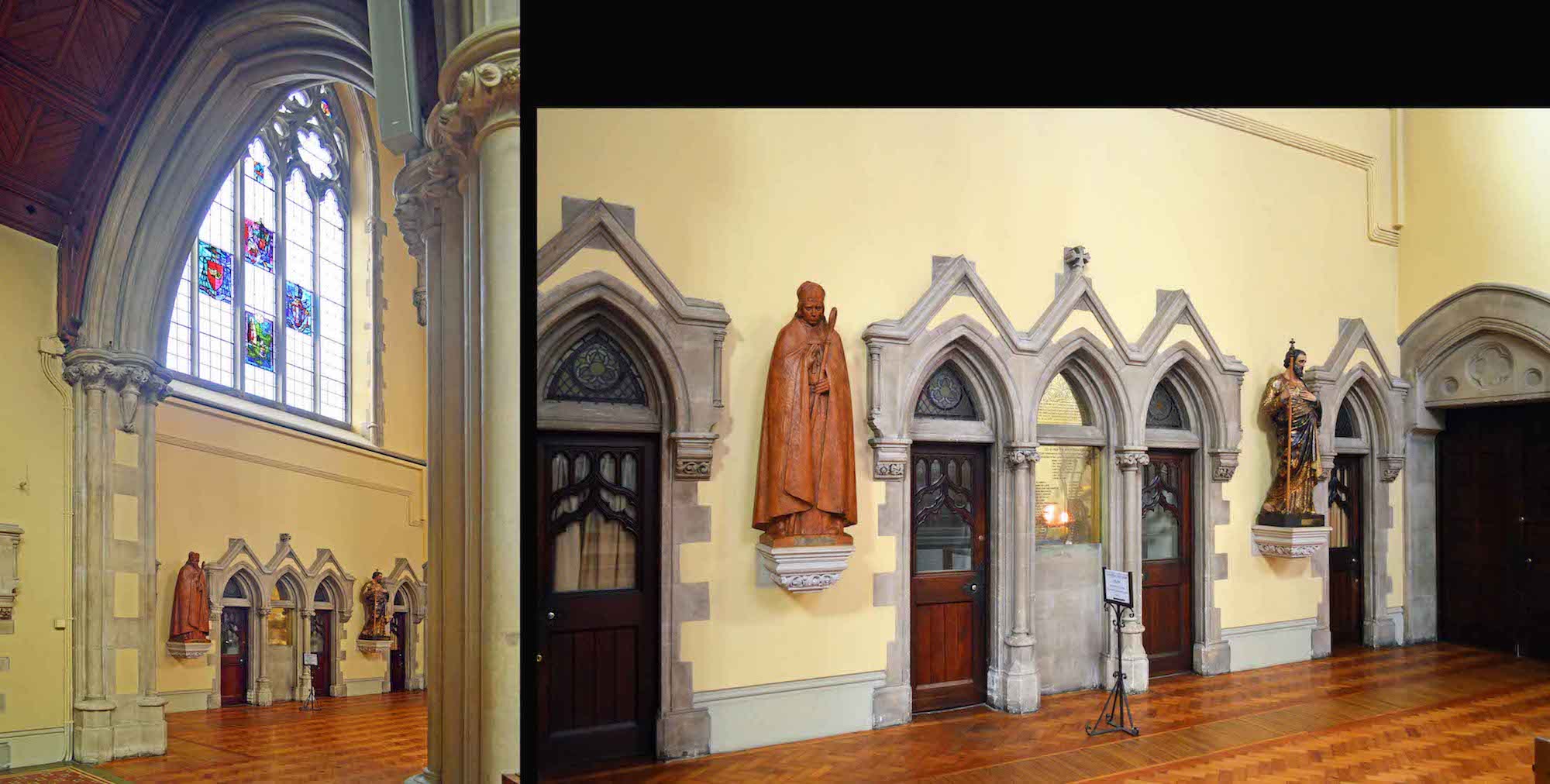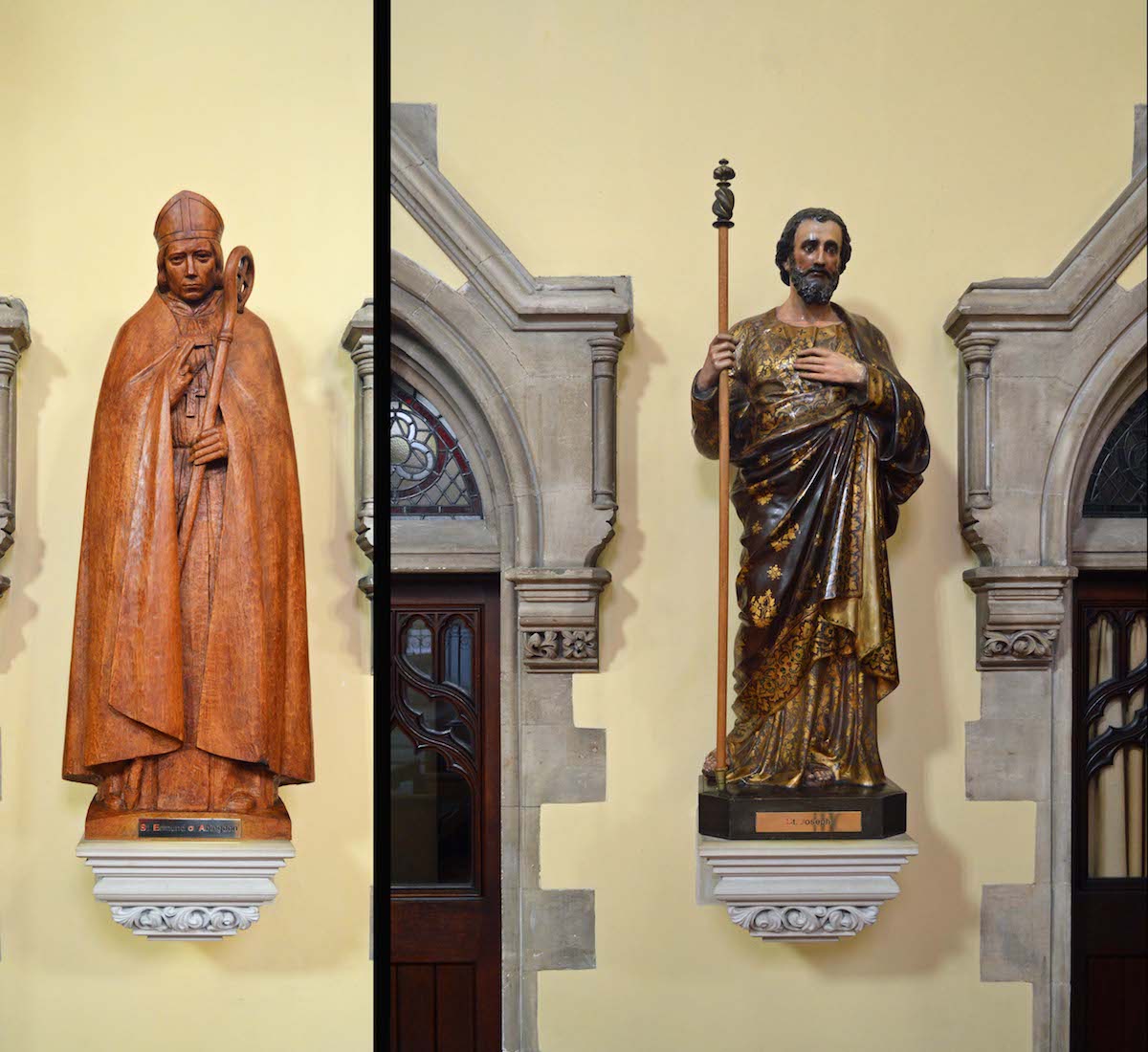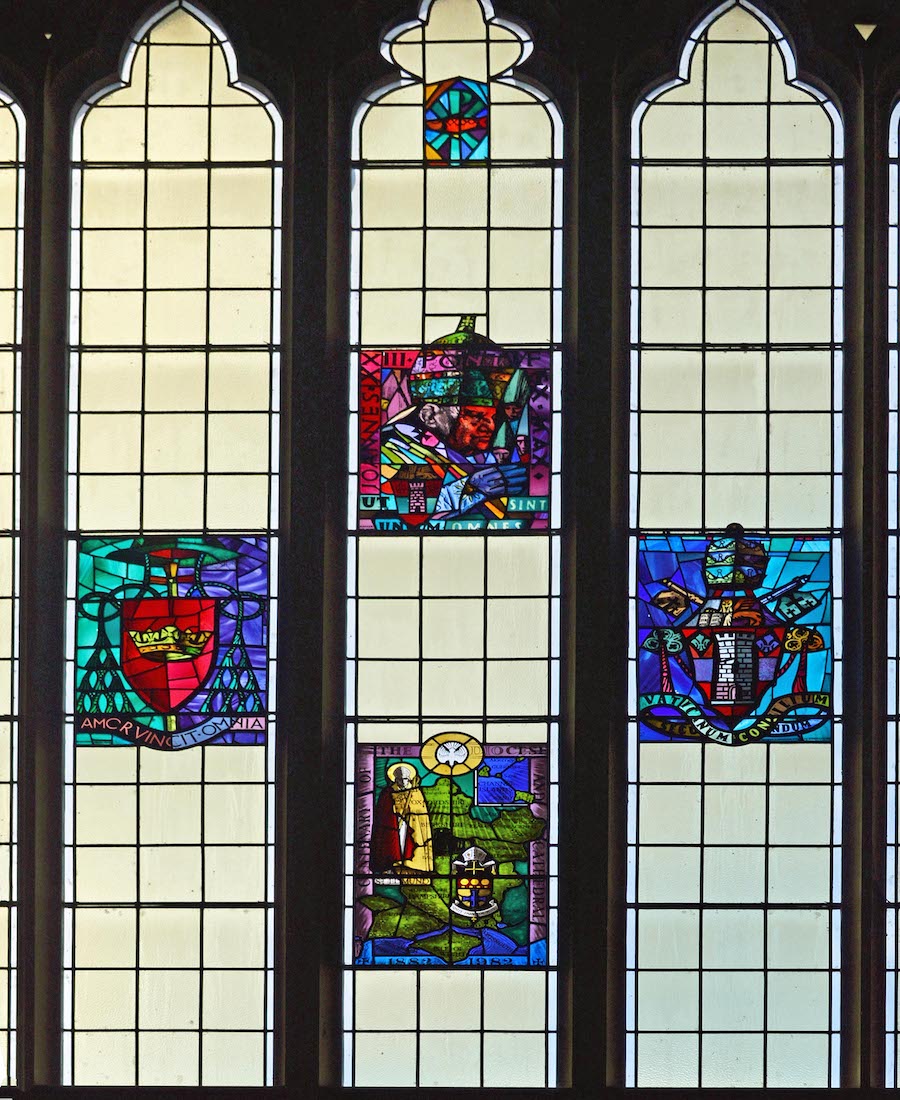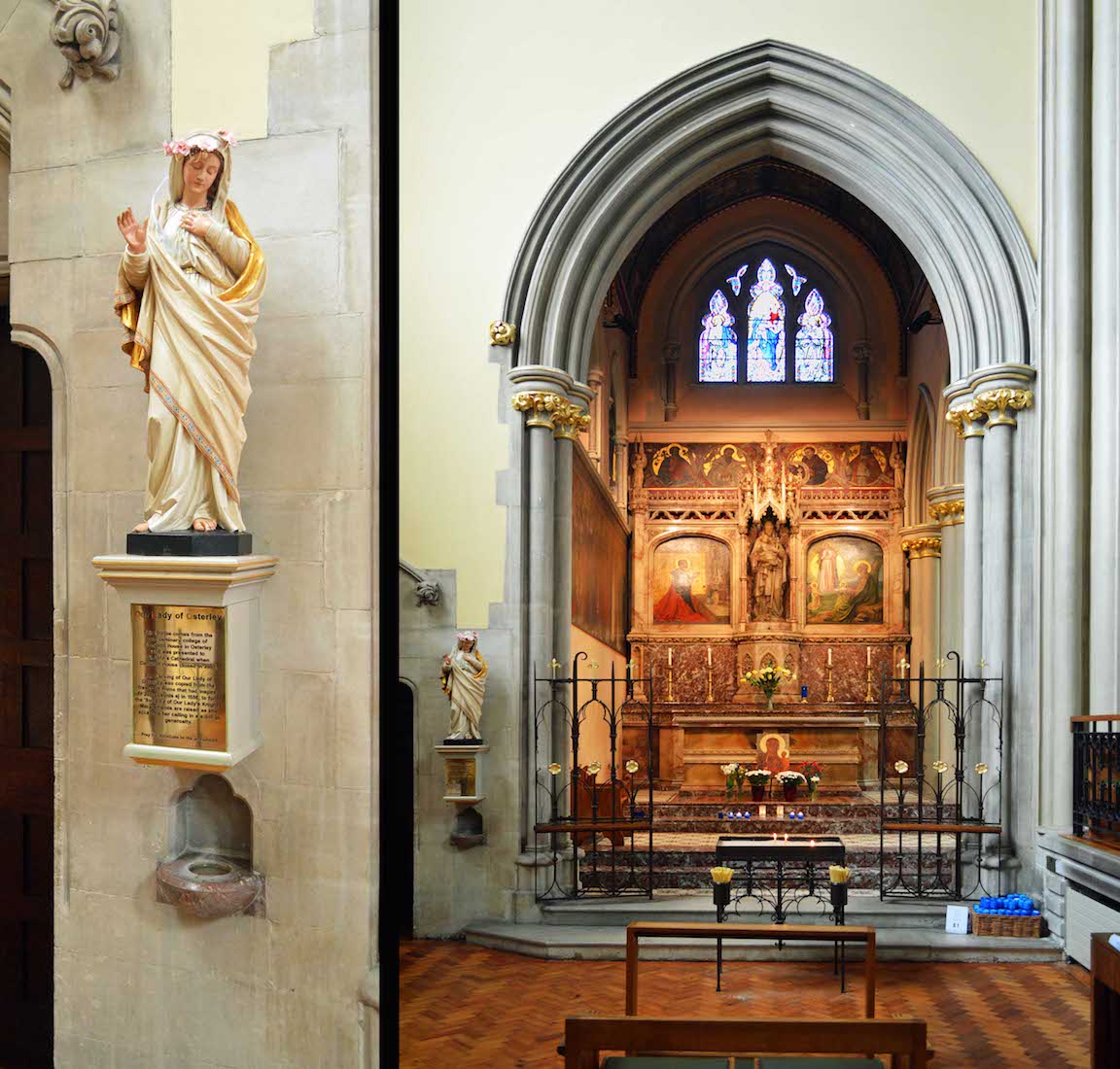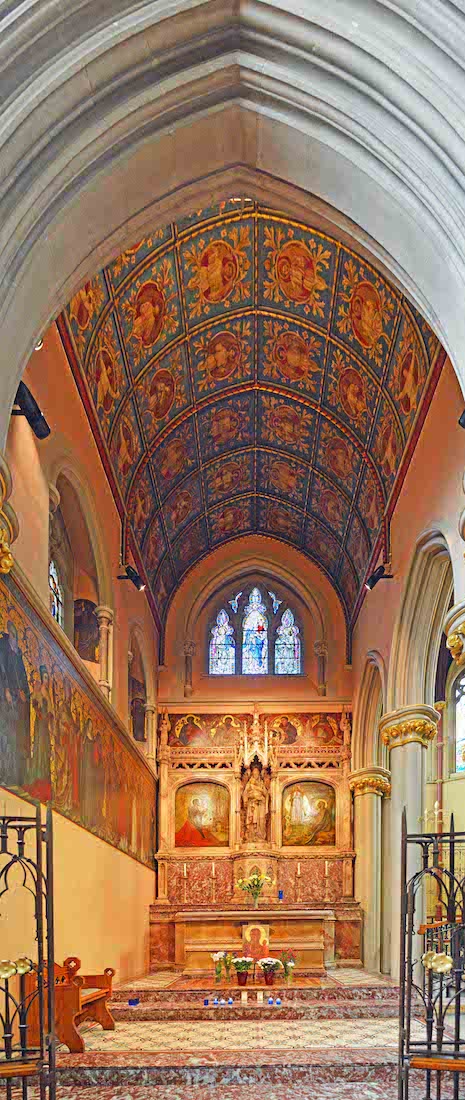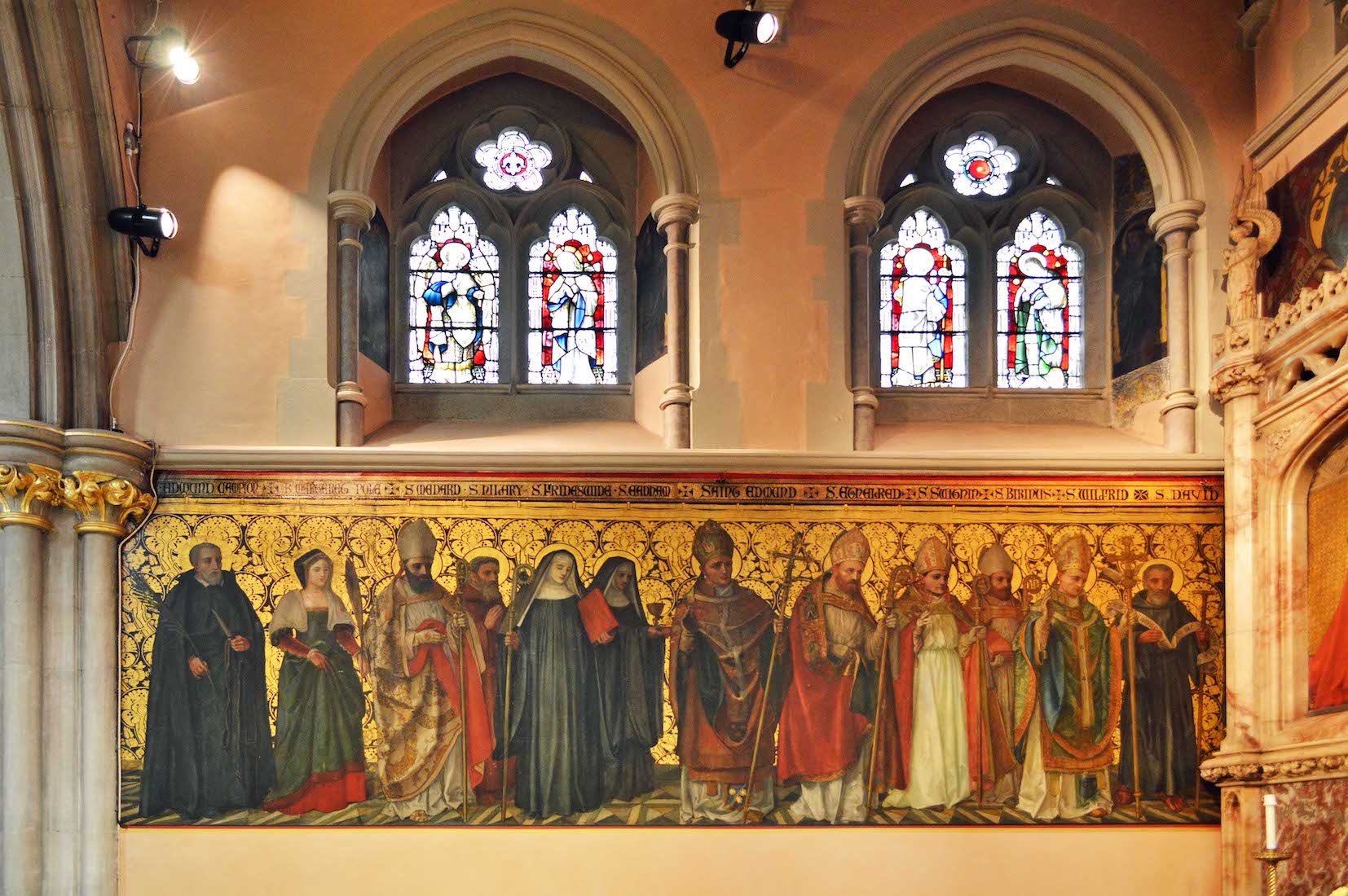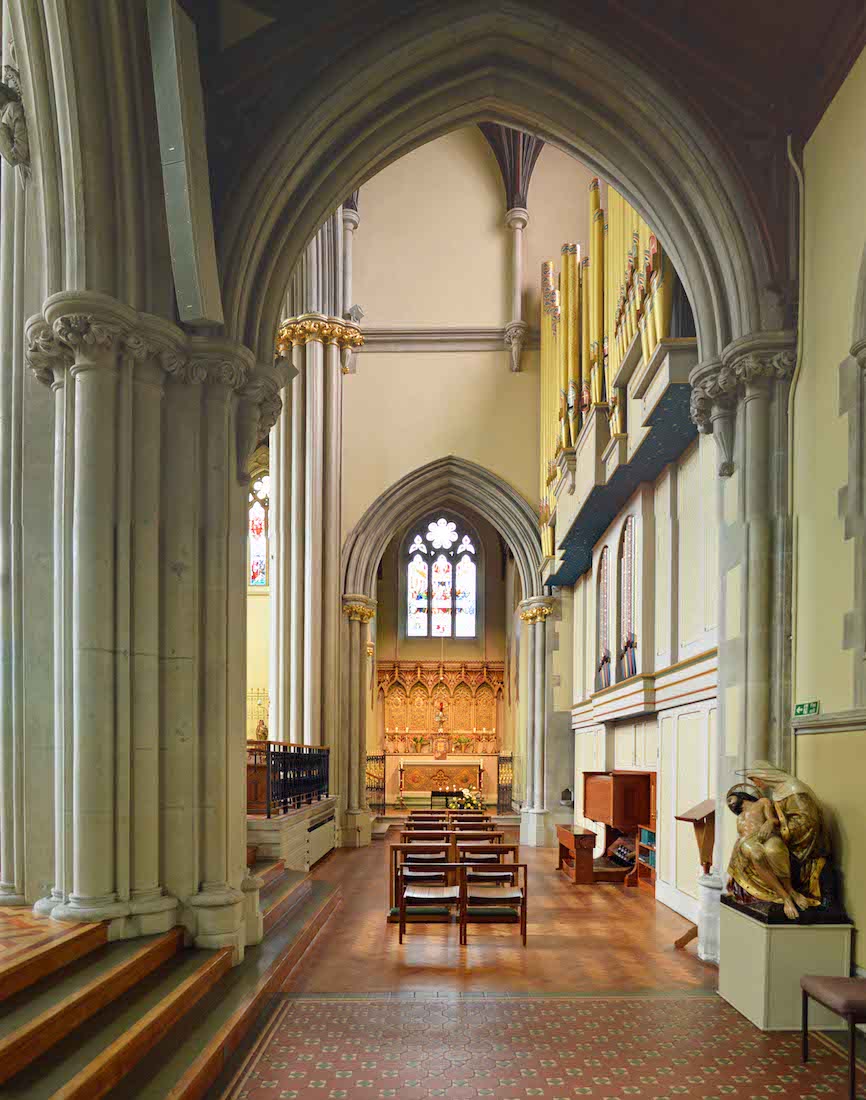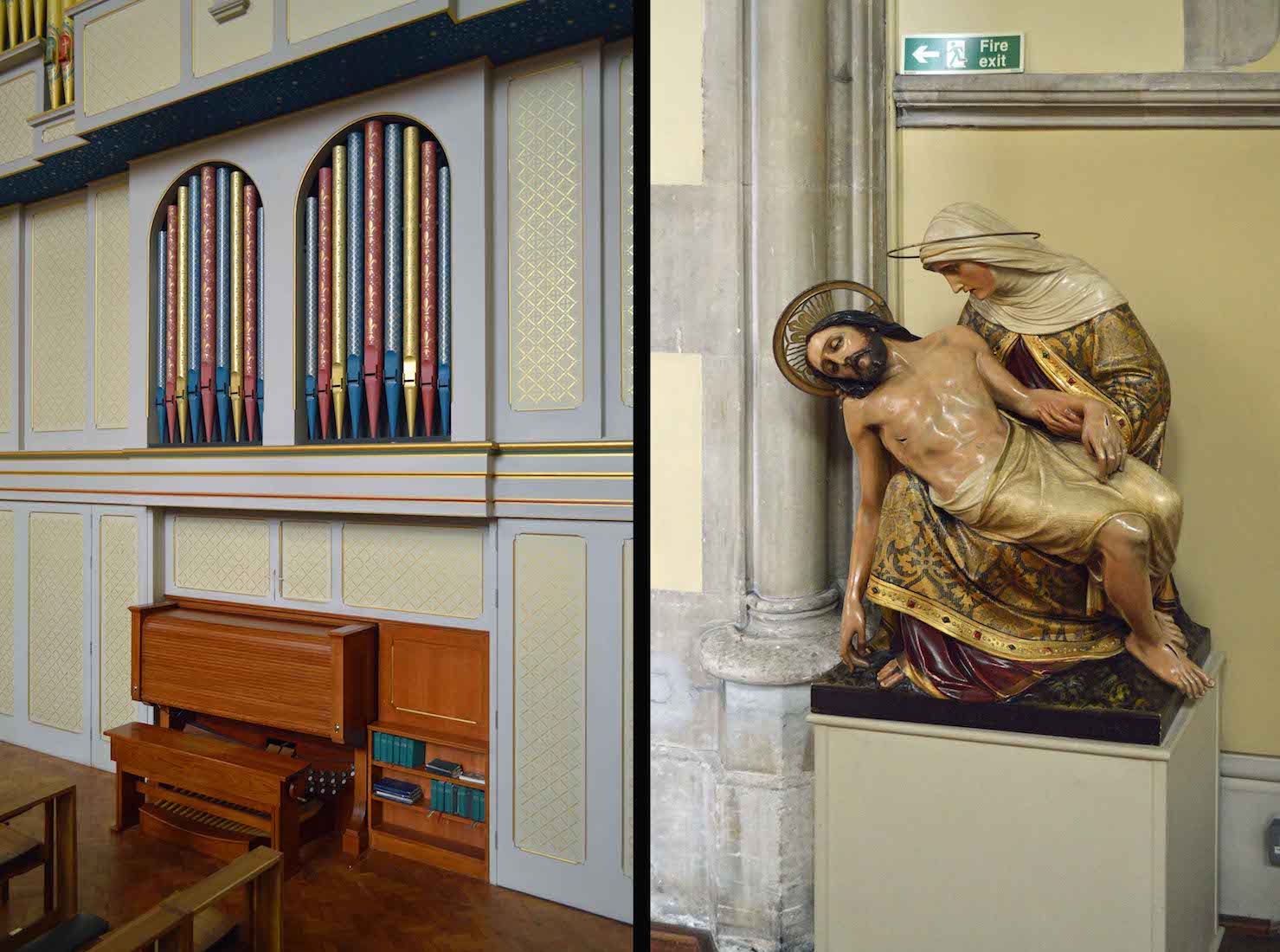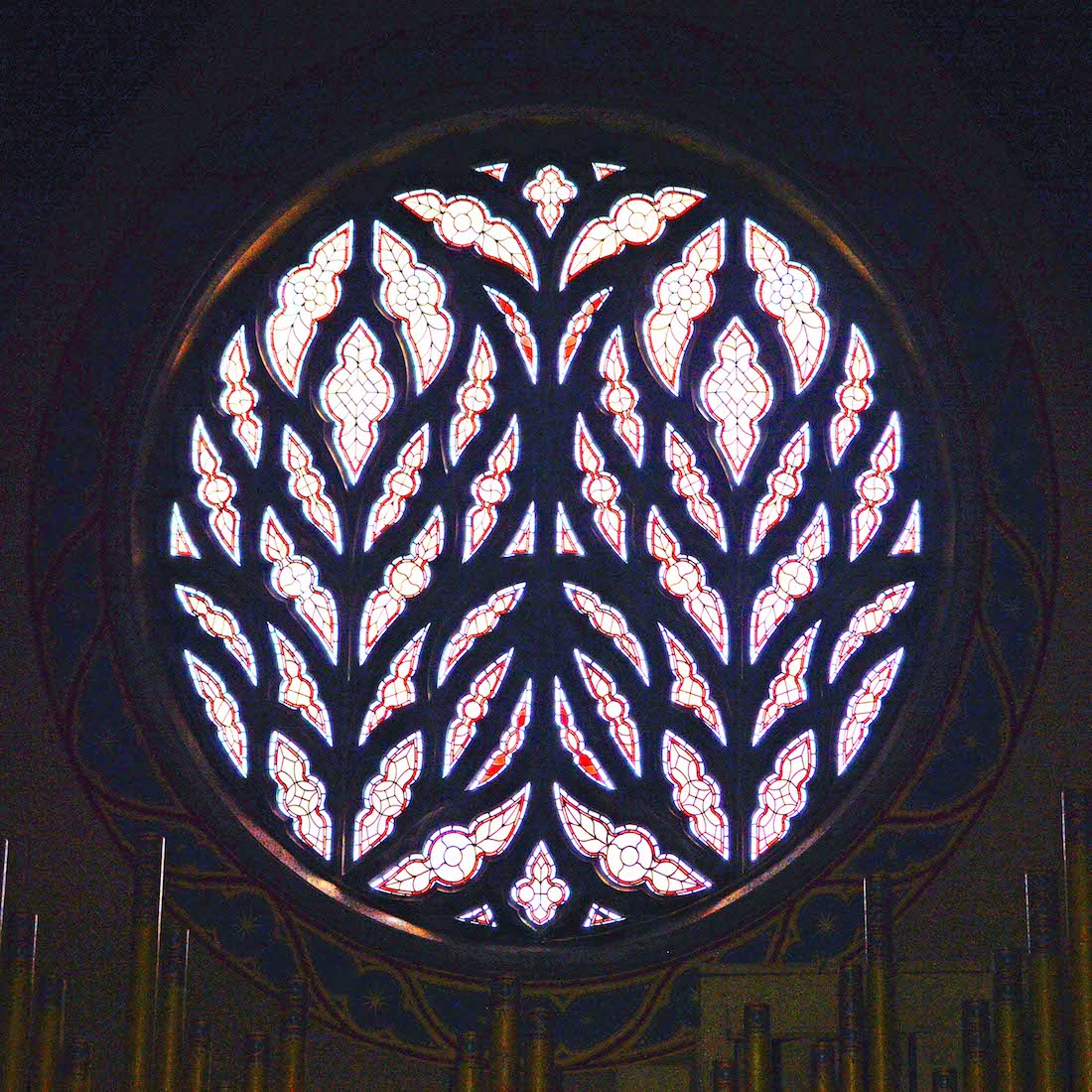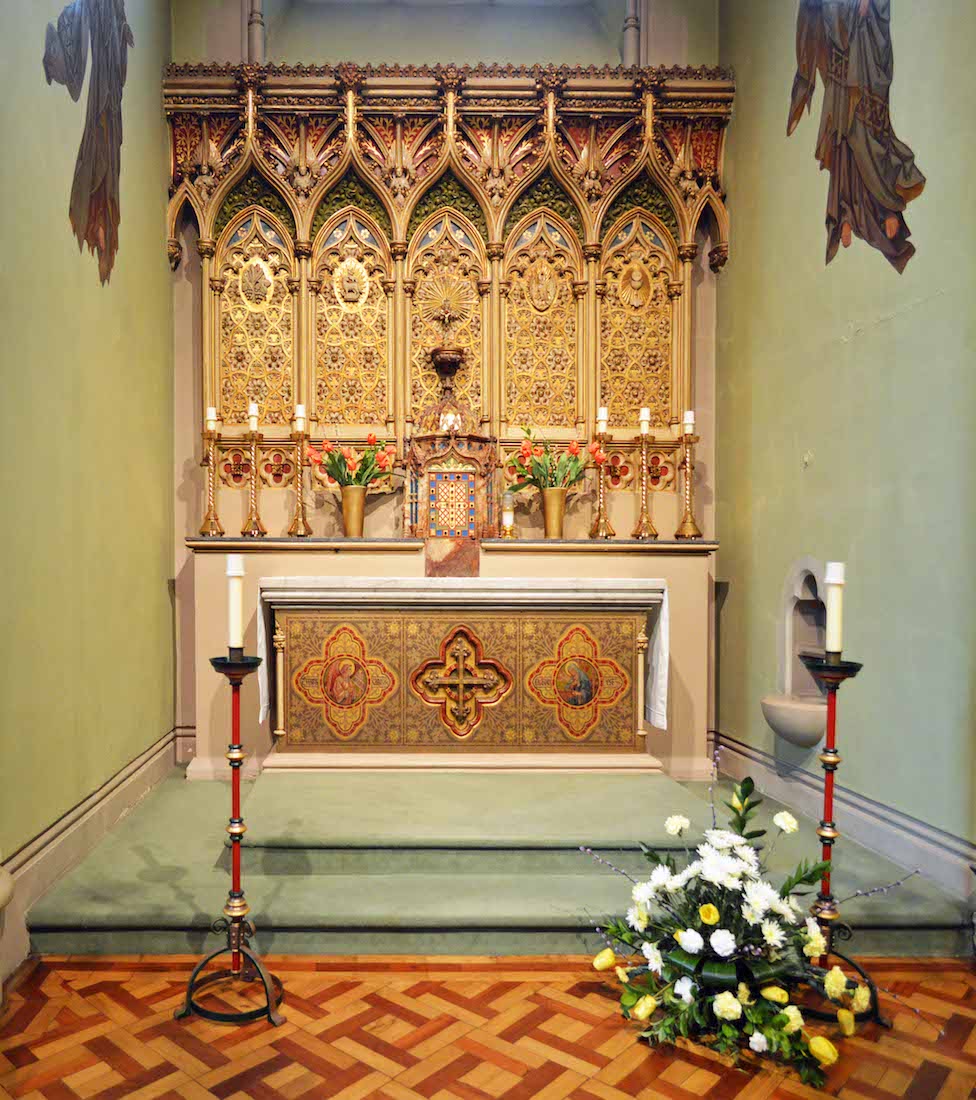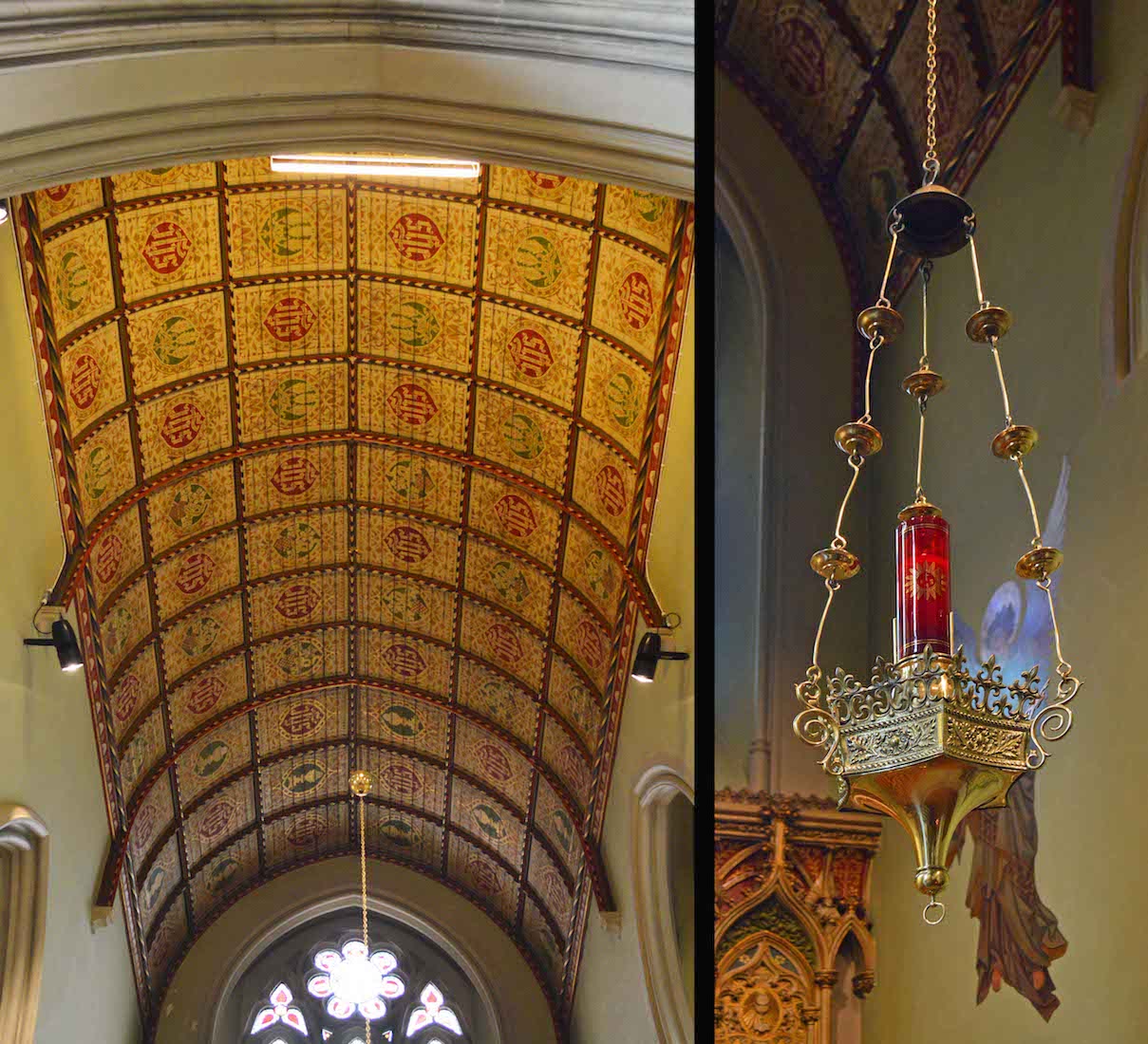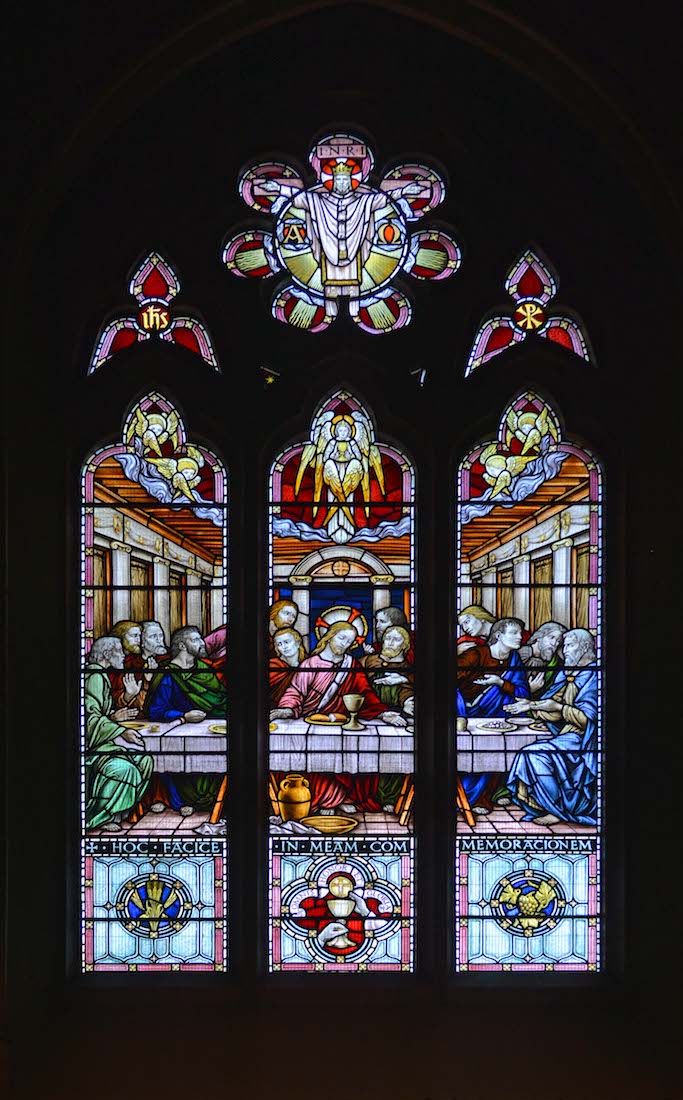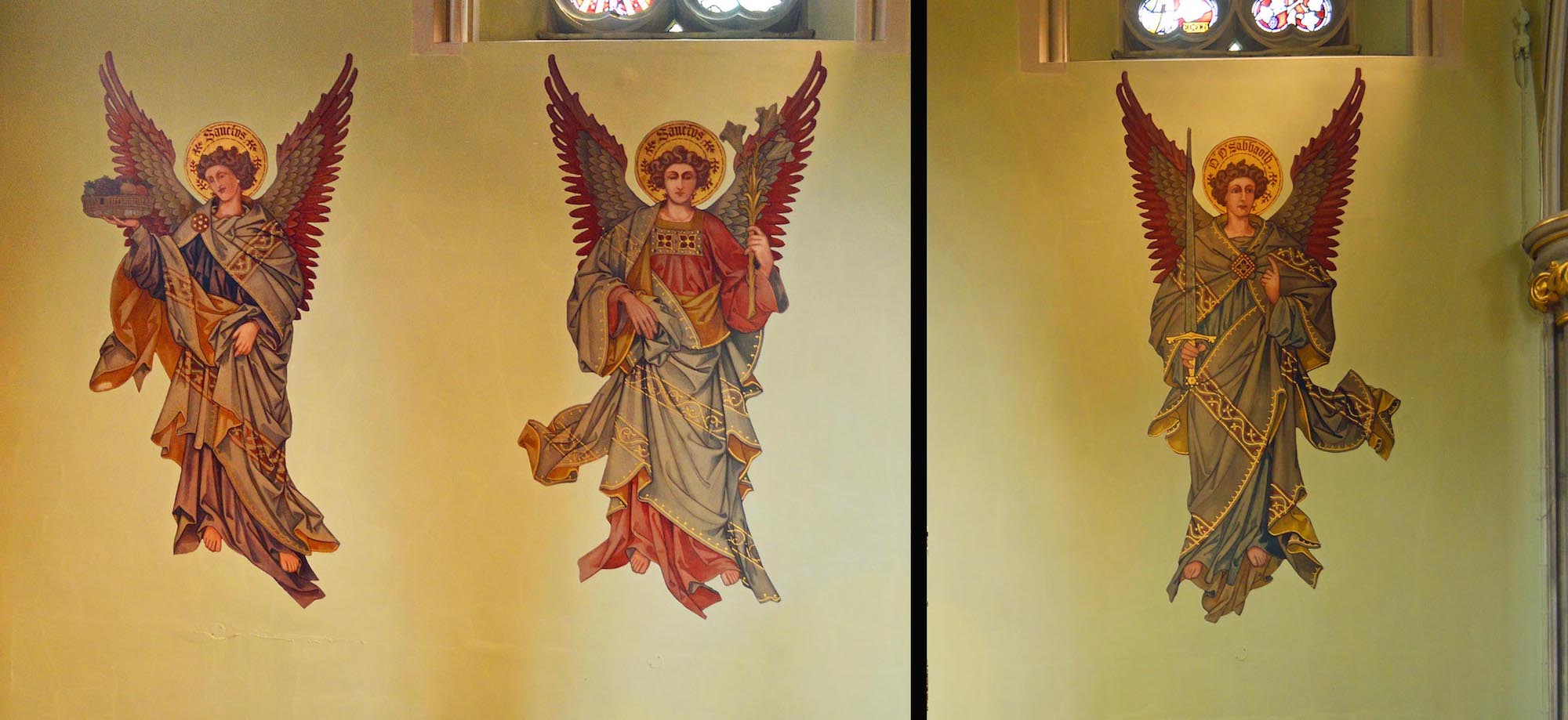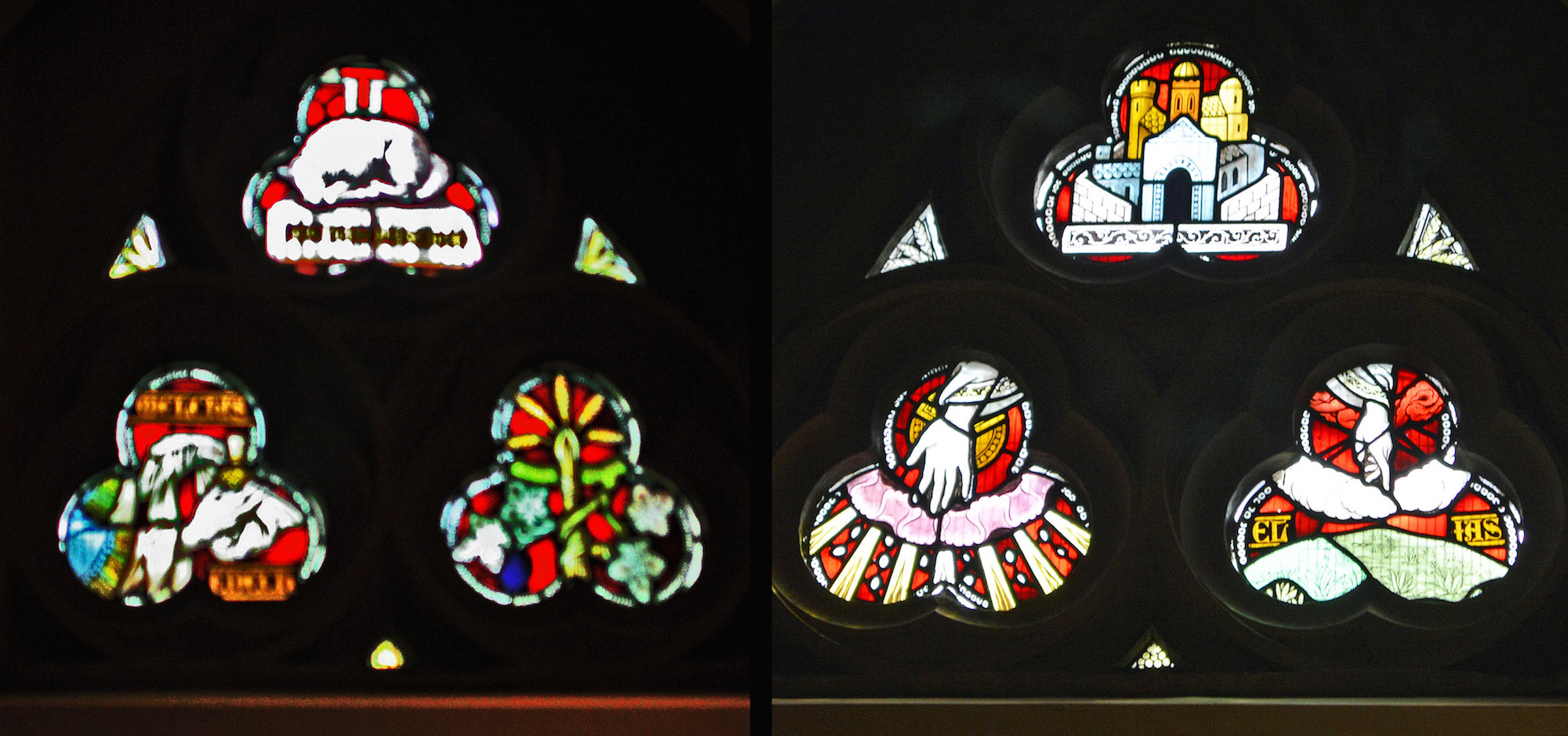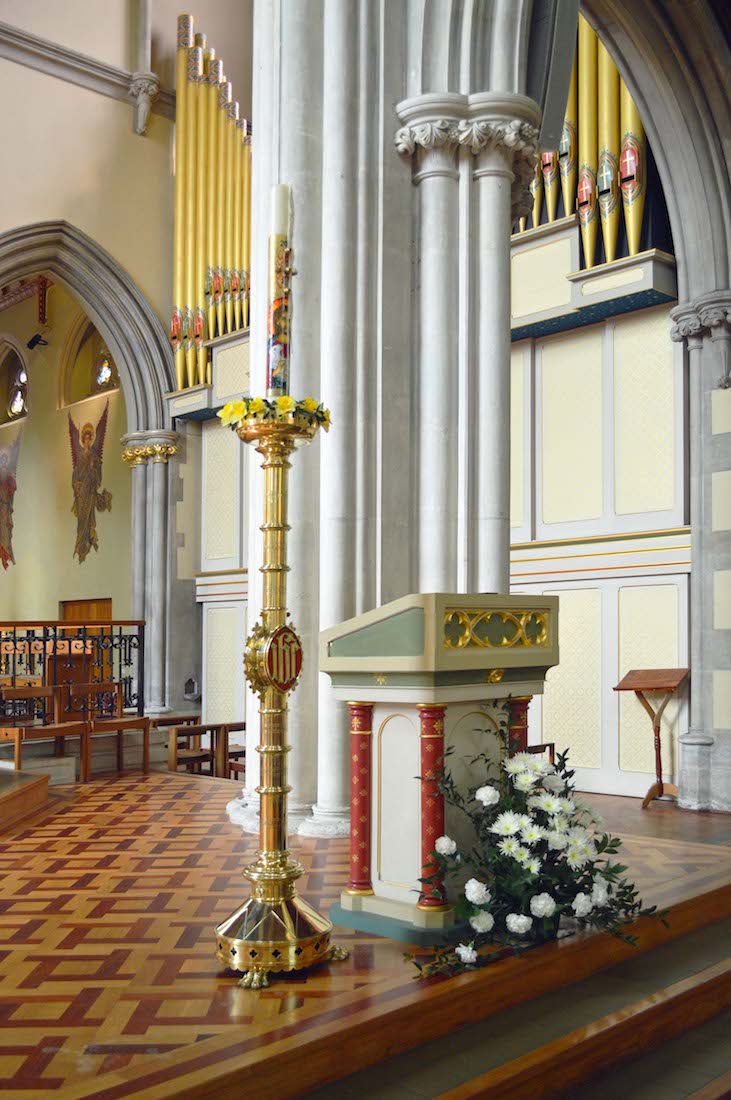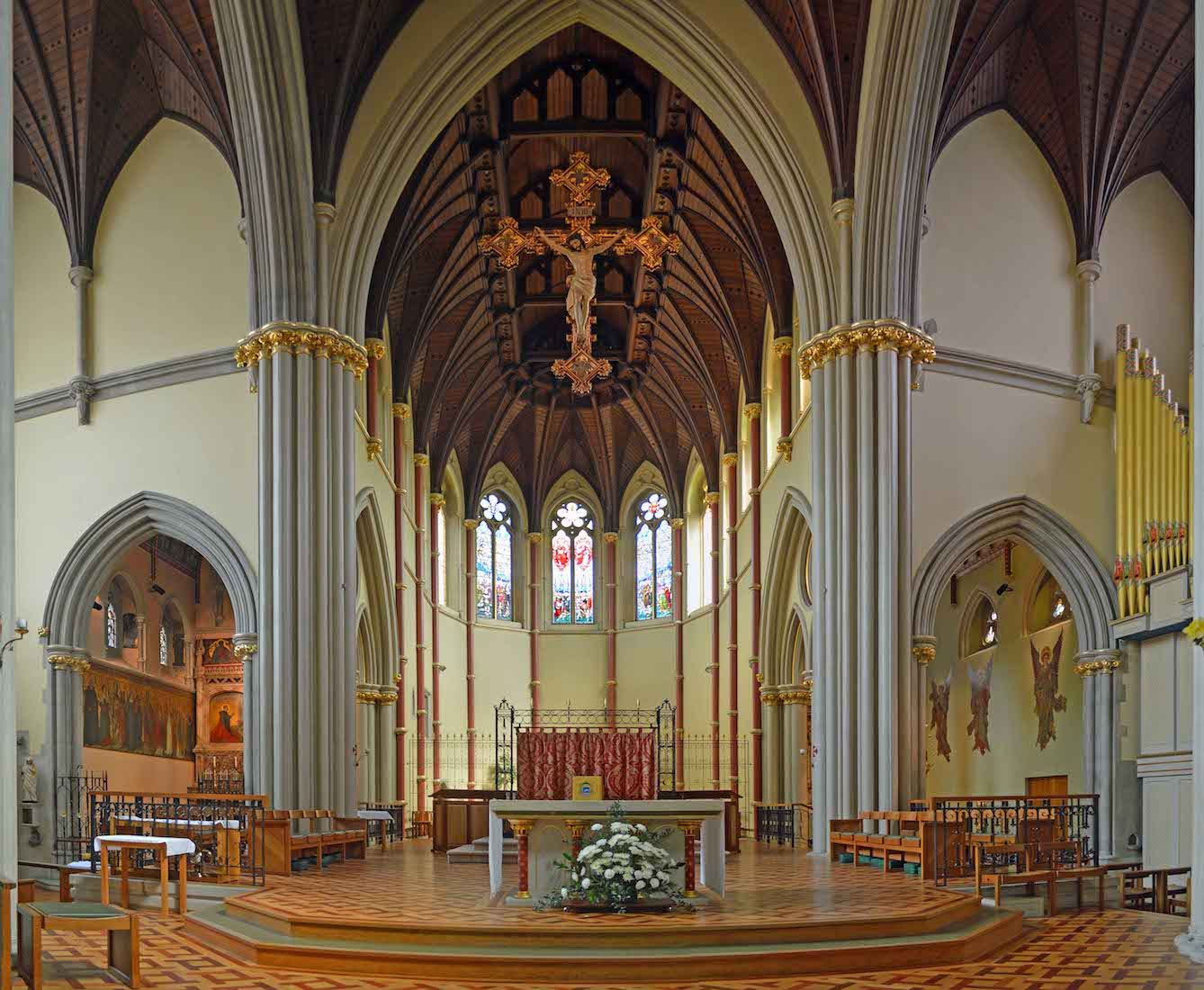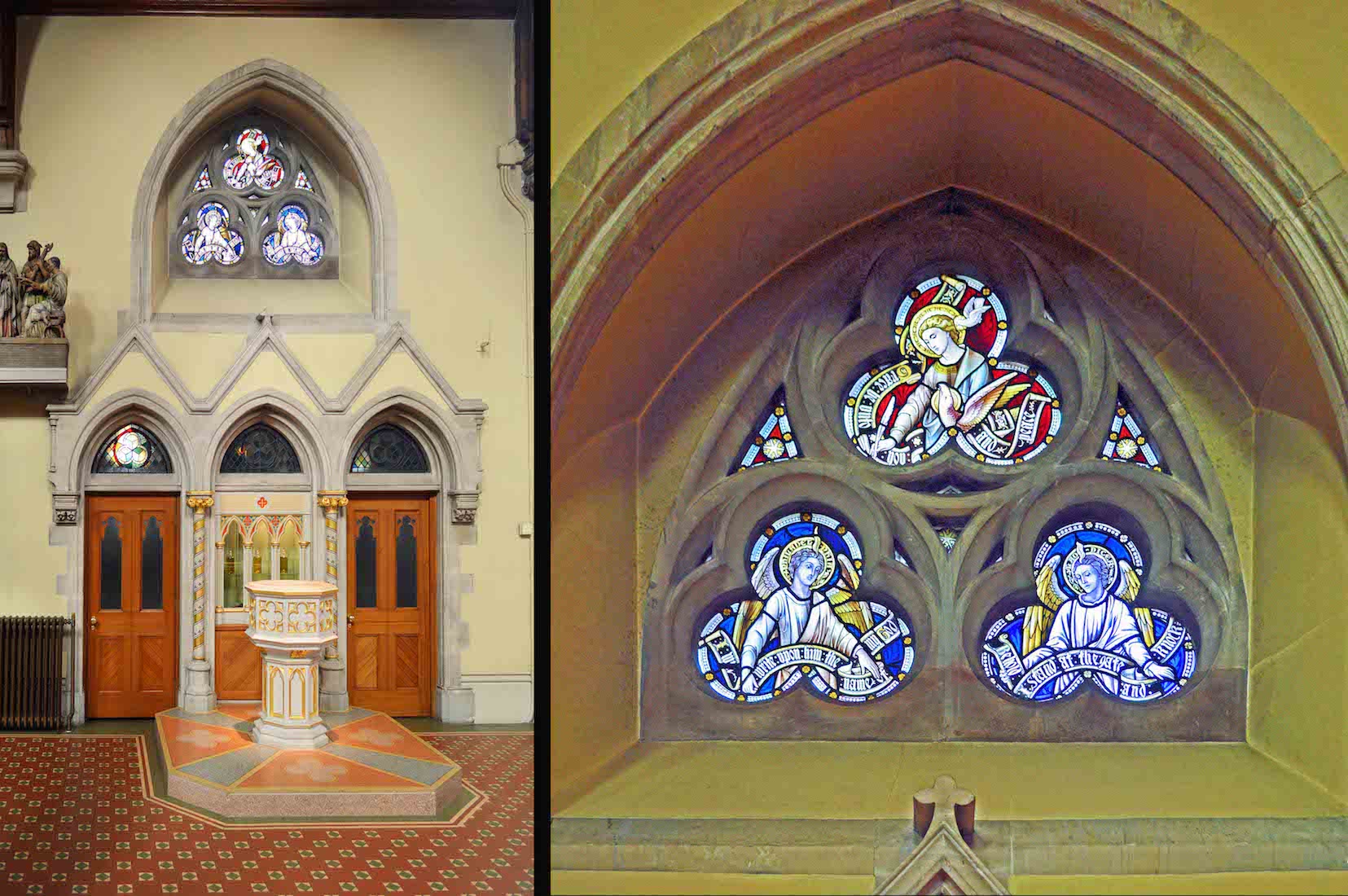
Following a little further along the North nave, we come to the baptismal font. Baptism is regarded by the Church as a right of entry into the Church. Above the font is a set of blue trefoil windows each showing an angel. At top the text is: Grace be unto you and peace (Phil 1:2). At left is the angel of Philapelphia with text: I will write upon him the name of my God (Rev 3:12). At right is the angel of Laodicea with text: Behold I stand at the gate and knock (Rev 3:20). PLAN
42. FONT AND OILS
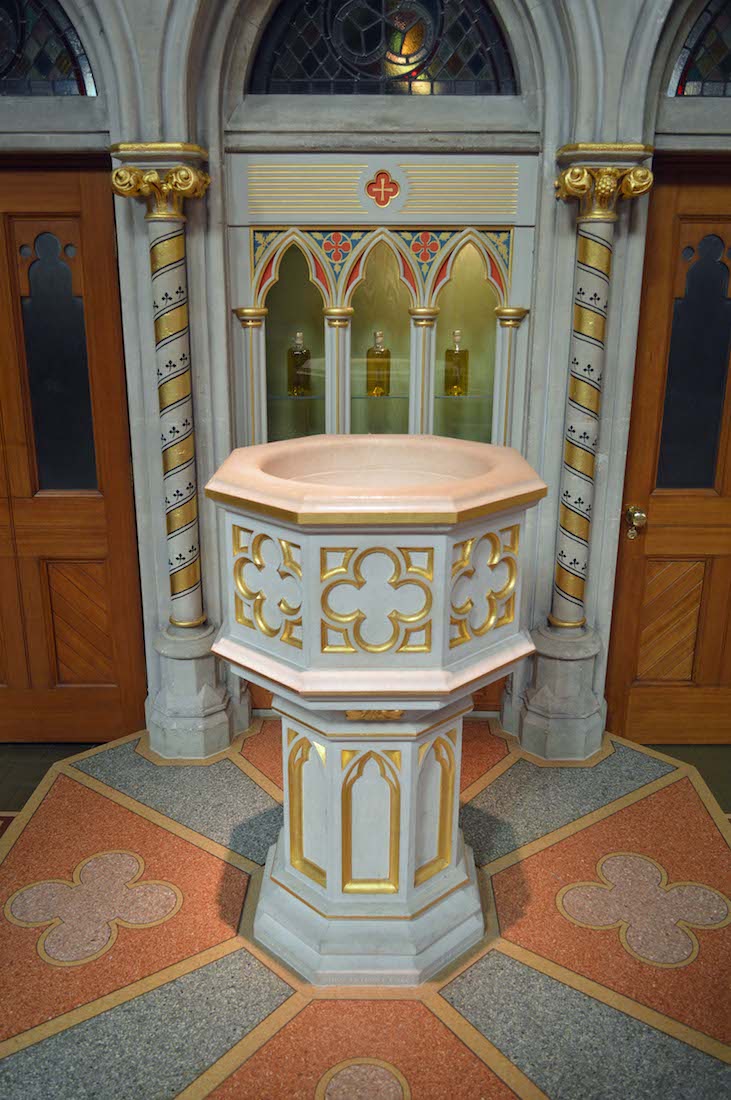
The baptismal font is simple and modern, but the setting works well. Behind the font are the Holy Oils: the oil of the sick, the oil of the catechumens and the holy chrism oil. The first is used for anointing the sick. The oil of the catechumens is used for anointing adults and infants prior to baptism. The third oil, holy chrism oil, is olive oil mixed with balsam. The oil symbolizes strength, and the fragrant balsam represents the ‘aroma of Christ’ (2 Cor 2:15). Anointing with chrism oil signifies the gift of the Holy Spirit. It is used to consecrate someone or something to God’s service..
44. ST EDMUND AND ST JOSEPH
The two figures on this transept wall stand on little labelled pedestals, telling us that St Edmund of Abingdon stands at left, and St Joseph at right. St Joseph was the spouse of St Mary, the mother of Jesus. Edmund of Abingdon (c 1174 – 1240) was a 13th-century Archbishop of Canterbury in England. He combined a gentle personal temperament with a strong public stature and severity towards King Henry III in defence of Magna Carta and in general of good civil and Church government and justice. He was canonised in 1246.
45. NORTH TRANSEPT WINDOW
After the destruction of the cathedral windows in the bombing of WWII, the Cathedral’s windows were restored during the 1950s by Arthur Buss. This window in the North transept is designed to commemorate the Second Vatican Council and the centenary of the diocese.
46. TO THE LADY CHAPEL
From the North transept, we move directly across to the Lady Chapel. At left is a sculpture entitled ‘Our Lady of Osterley’. This statue came to the Cathedral in 2004 from Campion House in Osterley, when the college closed. The carving of Our Lady was copied from the fresco in Rome that had inspired Fr John Leunis SJ in 1556, to form the Society of Our Lady’s Knights. Mary’s hands are raised as she accepted her calling in a spirit of generosity. The Lady Chapel is small but very ornate.
47. LADY CHAPEL
As we draw near to the Lady Chapel we see a simple altar in front of an ornate reredos. An icon of Madonna and Child rests in front of the altar, and a carved version stands above the altar in a special niche; a painting is seen on either side of this niche. There is a long mural on the wall at left, and three sets of stained glass windows: two at left, and one above the reredos. Over all is a richly painted coffered ceiling with 36 panels.
48. NORTHERN MURAL
The North wall of the Lady Chapel features a mural with a great parade of saints. From left we see: St Edmund Campion, B(lessed) Margaret Pole, St Medard, St Hilary, St Frideswide, St Eadham, St Edward, St Ethelred, St Swithun, St Birinus, St Wilfrid and St David.
49. LADY CHAPEL WINDOWS
There are two windows on the North wall of the Chapel, and the more easily seen window on the East wall. The two North windows (at left) show: The Annunciation, where the Angel Gabriel tells Mary she has been chosen to be the mother of Jesus; the Visitation, in which Mary visits her cousin Elizabeth. The East window depicts Mary as the Queen of Heaven, and holding the infant Jesus.
50. TOWARDS THE BLESSED SACRAMENT CHAPEL
We return to the front of the nave, and cross to the South side. Looking to the East we see another chapel, and we expect to have the South transept to our right. What we actually see on our right is a Pietà sculpture, and a little further away, an organ console.
51. ORGAN CONSOLE AND PIETÀ
The original Pietà (The Pity; 1498–1499) is a work of Renaissance sculpture by Michelangelo Buonarroti, housed in St. Peter's Basilica, Vatican City. This sculpture differs significantly from the original, while carrying the same theme. The organ console seems to be associated with a small set of pipes: we shall need to stand back and take a wider view! In fact, the Cathedral organ fills the South transept.
52. SOUTH TRANSEPT: ORGAN AND WINDOW
In 1999 it was decided that a major overhaul was needed for the Cathedral organ. On the basis of a report by organ consultant Ian Bell, it was decided that a new instrument was needed. A T.C. Lewis organ was found in a redundant church in Bishopswearmouth, Sunderland. Roughly contemporary with the Cathedral, this instrument was lovingly restored and rebuilt by David Wells and his skilled team of Organ Builders from Liverpool. A temporary case was constructed and painstakingly decorated by David Renshaw. It is hoped in time to construct a more permanent case.
53. SOUTH TRANSEPT WINDOW
The South transept is filled with the large pipe organ, but the oculus (the Dean’s window) is still clearly visible from the crossing. The design of the outer painted decoration matches the design on the ends of the organ pipes. An oculus (Latin for 'eye') is a circular opening in the centre of a dome or in a wall. Originating in antiquity, it is a feature of Byzantine and Neoclassical architecture. This oculus is predominantly clear glass, but with distinct traces of colour in its patterning. The term ‘rose window’ is not really appropriate here.
54. BLESSED SACRAMENT CHAPEL ALTAR
The altar and reredos are of ornate gold. The altar frontal has three sections: a cross in the centre and an angel and St Mary on the sides. Above the altar are six candlesticks and the central tabernacle containing the Eucharistic Elements. Across the top of the reredos are four symbols (from left): the vine with grapes, the sacrifical Lamb, the pelican with young, and the wafer and chalice – all sacramental symbols. We see an angel on each side wall.
55. CHAPEL CEILING AND LAMP
The curved ceiling is lined with repeated panels showing stems of grain, vine bearing grapes, wafer and chalice, and the letters ‘ihs’ – the first three letters of the name ‘Jesus’ in Latinized Greek. Hanging from the ceiling is the sanctuary lamp, signifying the presence of the Reserved Sacrament in the tabernacle.
56. CHAPEL WINDOW
The East window of the Chapel has three lancets together showing Jesus at the Last Supper. The text below reads: ‘hoc facite in meam commemorationem’ – Do this in remembrance (of me).
57. CHAPEL ANGELS
These three angels decorate the South wall of the Blessed Sacrament Chapel. The two angels at left have ‘Sanctus’ (= Holy) about their heads. One carries a bowl of fruit, the other a lily. The angel at right carries a sword, and has the word ‘Sabbaoth’ about his head. The word literally means ‘armies’ or ‘hosts’, but is often taken to refer to God (as in Lord of Hosts).
58. CHAPEL TREFOILS
Above the angels (and difficult to photograph!) are two trefoil windows. The word ‘Elias’ is a form of ‘Elijah’; the name means ‘Jehovah is God’.
59. CANDLESTICK AND AMBO
Leaving the Blessed Sacrament Chapel, we return to the crossing. On the organ side is the Paschal candle on a rather grand stand, and the ambo. The Paschal candle represents Christ being ‘the Light of the world’ and has special significance at Easter. The ambo is a combination lectern / pulpit, used for the reading from the Bible, and for preaching the Word.


